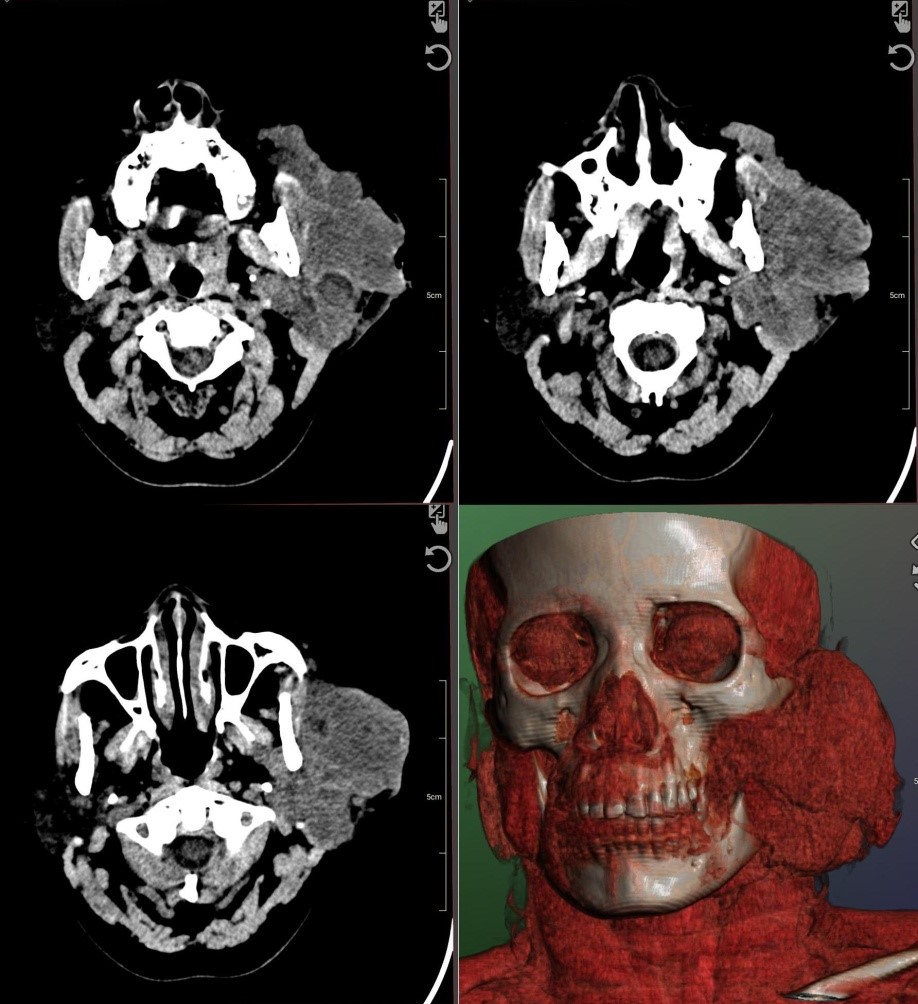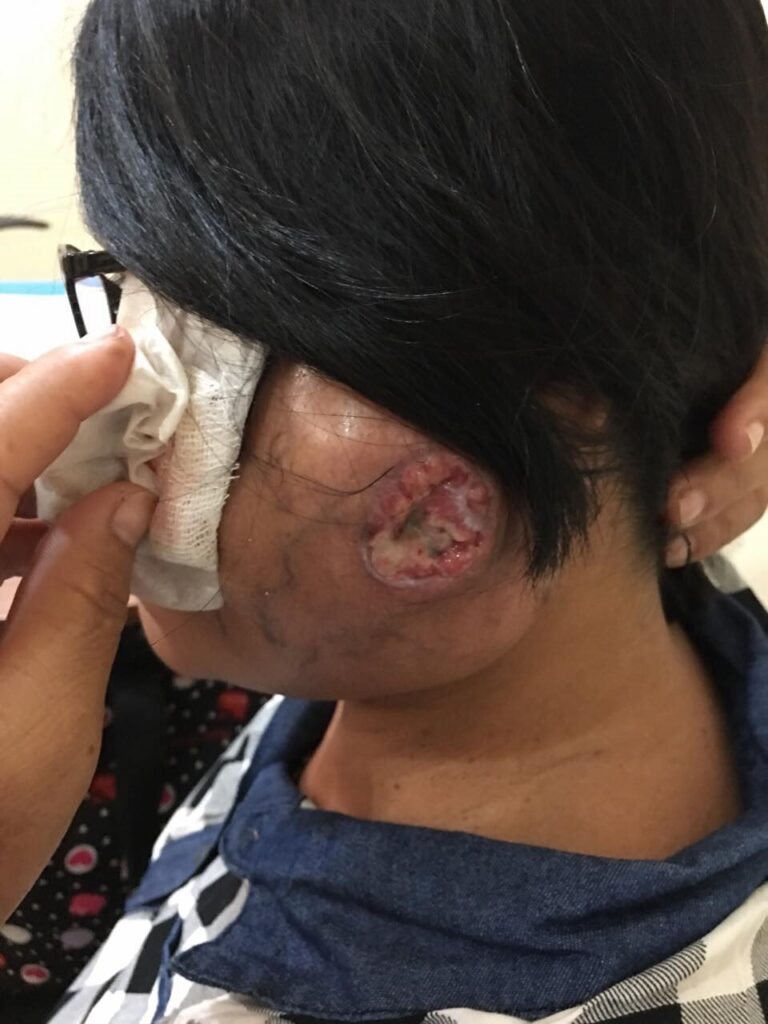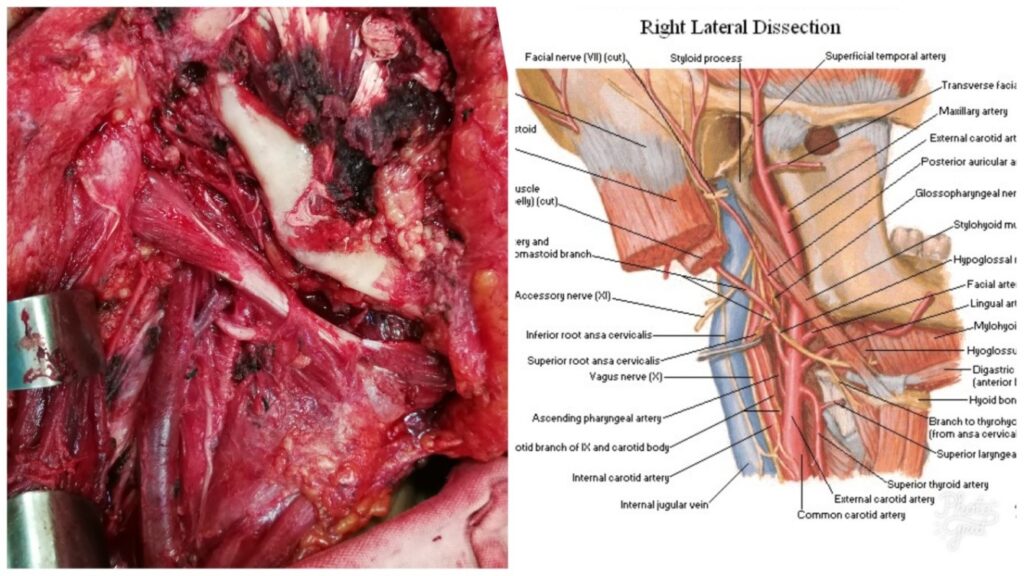I love my job. Being an ENT-head and neck surgeon means you’ll never know what surgical challenge may come your way. One day, it may be doing a revision of a cleft lip surgery. On another day, it may be removing a fishbone stuck in a patient’s throat. Or some days, it may be a challenging head and neck cancer surgery such as this case.

The patient was referred to me by another ENT doctor for further management. Her story began 1 year before her ENT consult when she noted a rapidly enlarging mass under her left ear. 2 months before her consult, she noted weakness in her smile and her ability to close her eyes. A needle biopsy was done which revealed a high-grade mucoepidermoid carcinoma of the parotid gland (a cancer of the salivary gland) and she was advised surgery.
This is the picture of her CT scan showing invasion of the structures deep to the jaw. There was also spread to the lymph nodes near the great vessels of the left neck.


She was then scheduled for cancer surgery: wide excision of parotid gland tumor, facial nerve sacrifice, and modified radical neck dissection on the left. In layman’s terms, that means removing the tumor, with margins of 1.5 cm of normal tissue, identifying the trunk of the nerve which moves the face (remember that she already had facial nerve paralysis before the surgery so that means the nerve was already invaded by the tumor) and removal of all the lymph nodes surrounding the great vessels of the neck.
The next picture was taken after the tumor was removed. The reason why this is one of my memorable surgeries is, despite the size of the tumor, because of the details of the anatomy are almost similar to our holy grail anatomy book: Netter.

In the picture above, I placed the picture taken intra operatively after removing the tumor, side by side with the diagram from the anatomy book. This is the dissection of the area near the jaw. In this picture, you will appreciate how, despite the big tumor, we were able to preserve, and dissect with care the great vessels supplying the head and the brain (the carotid and the jugular), the hypoglossal nerve (Cranial nerve 12-the nerve which controls tongue movement), the spinal accessory nerve (Cranial nerve 11, which controls shoulder movement), the facial artery, as well as other structures like the digastric muscle, and even the ansa cervicalis. I’m sure this sounds like Greek to most non medical readers. But my greater point here is that choosing a competent surgeon is important especially for head and neck surgeries because of all the vital structures that control our voice, swallowing, shoulder and tongue movements and supply blood to our brain.
Experience expert ENT surgical care tailored to your needs.
Book now to schedule your appointment with a skilled ENT surgeon near you and take the first step towards a healthier you.
Your well-being is our top priority.

